Research Highlights 2008
The Stochastic Dance of Circling Sperm Cells: Sperm Chemotaxis in the Plane
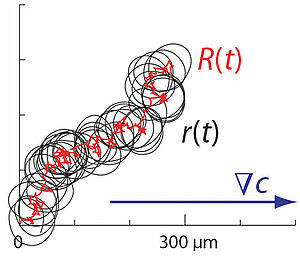
Sperm cells move in the plane on drifting circular trajectories. In the presence of fluctuations, these circles exhibit effective diffusion. This stochastic dance can be reliably steered by signaling systems which control the curvature of the swimming paths. This permits the sperm to find the source of a chemical attractant in a noisy environment.
B. Friedrich and F. Jülicher
New J. Phys. 10, 123025 (2008)
[PDF (844 kB)]
Enhancement of Sensitivity Gain and Frequency Tuning by Coupling of Active Hair Bundles
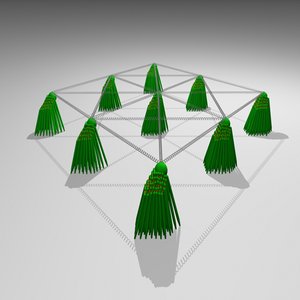
Hair bundles are highly sensitive mechanosensors that detect sounds in the ears of all vertebrate animals. Hair bundles are active detectors which amplify stimuly by spontaneous oscillatory movements. The collective action of several hair bundles can substantially enhance this amplification and provide the amplifier with sharp frequency selectivity.
K. Dierkes, B. Lindner and F. Jülicher
Proc. Natl. Acad. Sci. USA 105, 18669 (2008)
[PDF (584 kB)]
Dynamics of Anisotropic Tissue Growth
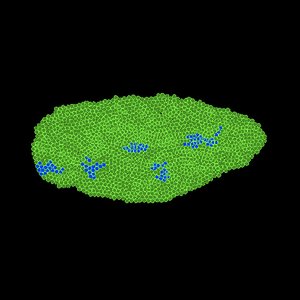
During growth, cells divide and have to push their neighbors to make room for newly produced daughter cells. In this process, cells rearrange and change their neighbors. We show that growing tissues can behave as viscoelastic fluids that are inherently active since cell division is associated with active stresses. If cell division is anisotropic, anisotropic active stresses lead to interesting cell flow profiles that can be described by a hydrodynamic theory.
T. Bittig, O. Wartlick, A. Kicheva, M. González-Gaitán and F. Jülicher
New J. Phys. 10, 63001 (2008)
[PDF (1,6 MB)]
The Chirality of Ciliary Beats
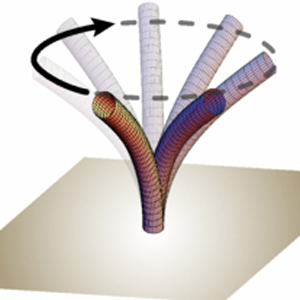
Cilia are hair-like appendages of cells which are motile and drive propulsion in a fluid. We develop a theory of the three dimensional ciliar beat and show that in general helical beat patterns emerge from the self-organization of motors and filaments. Because of the chirality of the ciliar structure, the helical beat patterns have a preferred chirality. Such chiral helical beating of cilia controls the left-right symmetry breaking of embryos during the development of mammals.
A. Hilfinger and F. Jülicher
Phys. Biol. 5, 016003 (2008)
[PDF (504 kB)]
Precision of the Dpp gradient
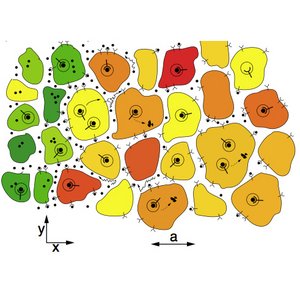
Morphogen gradients control the formation of patterns of gene expression in developing tissues. Morphogens spread in the tissue from cell to cell, are internalized and degraded. Because of cell-to-cell variability, fluctuations in the morphogen profile occur. We develop a theory of gradient fluctuations and show that the precision of a morphogen gradient is highest at a certain distance to the source. We furthermore quantify the precision of the Dpp gradient in the developing fly wing.
T. Bollenbach, P. Pantazis, A. Kicheva, C. Bökel, M. González-Gaitán and F. Jülicher
Development 135, 1137 (2008)
[PDF (1,6 MB)]; Supplementary Material [PDF (1,3 MB)]